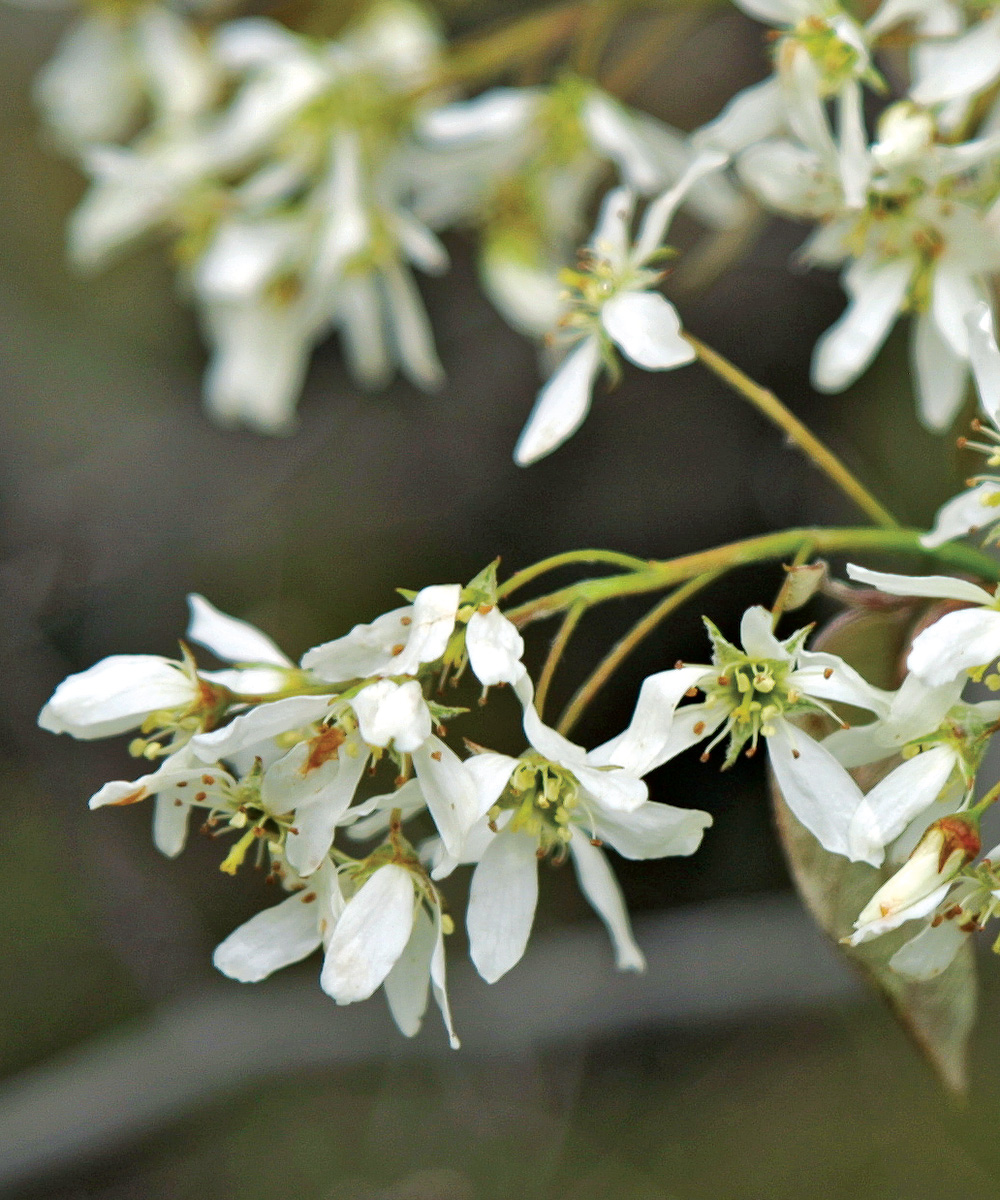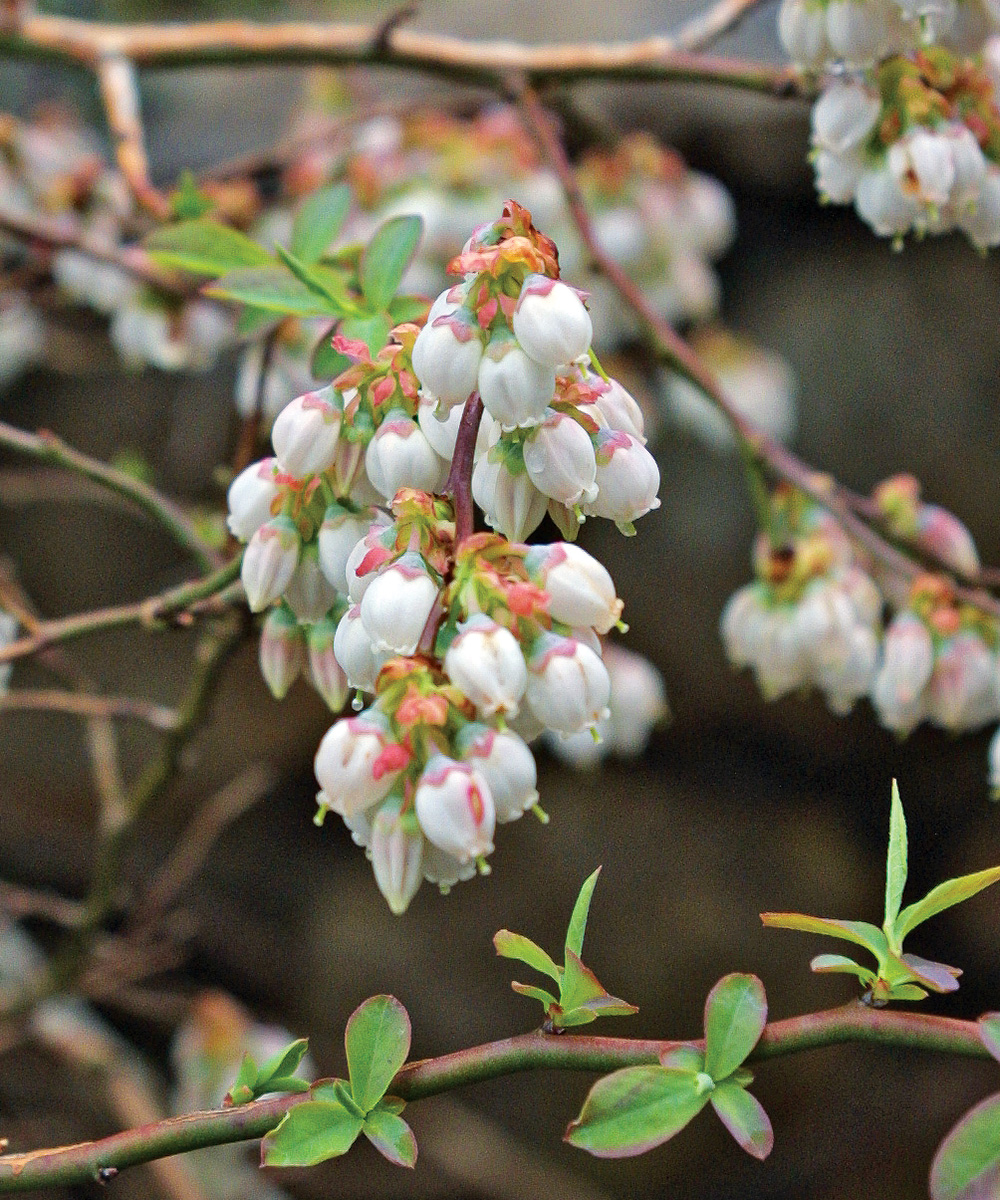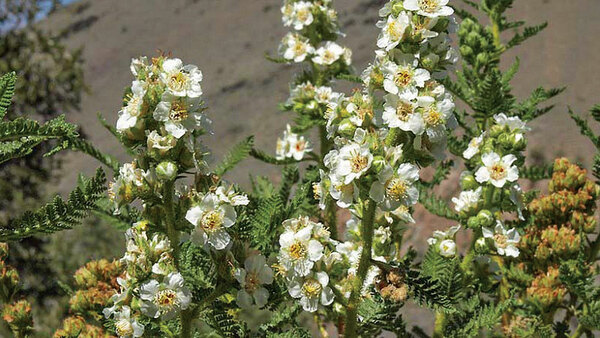
As William Cullina mentions in his article on plants for birds, the sad reality is songbirds are disappearing: “Habitat loss, pesticides, and the accompanying decline of insect populations have contributed to a loss of 25 to 30 percent of North American songbirds since 1970.”
But gardeners can help, and it just requires buying new plants! By growing more plants that help support local bird populations, you can do your part. Find plants for birds in the Northeast below, and discover even more plants for birds in William’s article, Native Plants for the Birds.
1. Serviceberry

Name: Amelanchier canadensis
Zones: 4–8
Size: 25 to 30 feet tall and 15 to 20 feet wide
Conditions: Full sun to partial shade; moist, well-drained soil
Native range: Eastern North America
If you would like to see cedar waxwings in the middle of a city, consider planting a few serviceberry trees. All species of Amelanchier are great, and once migratory birds find those trees, they will be annual visitors to the feast of delicious fruit that ripens early (hence the alternative common name, Juneberry). Many bird species prize these berries, while others are attracted to insect larvae that gather on branches and stems; several moth and butterfly species rely on serviceberry as a larval host plant. Many bird species count on these energy-rich caterpillars as sustenance during migration and for feeding their chicks. Serviceberries also have plentiful early spring flowers (pictured) and great fall color to round out the seasons.
2. White Oak

Name: Quercus alba
Zones: 3–9
Size: 50 to 80 feet tall and wide
Conditions: Full sun; wide range of well-drained soil
Native range: Eastern North America
Its lack of bird-attracting fruit may make it seem an outlier on this list, but the white oak may be the most important and most rewarding plant for the birding gardener. Oaks, along with a few other select native trees, are the framework of our ecosystem, hosting hundreds of species of insects from egg to adulthood. Those eggs, larvae, and adult insects are essential food for birds, especially during two very important times—migration and when feeding nestlings. In spring you’ll find warblers, vireos, and all manner of migrating birds on white oaks, gleaning the trunks and bare branches for insect larvae, ravenous for a meal after a long flight. Later, birds with nests return to these trees in search of more insects to feed to their young, which need protein. This is a stately tree with excellent autumn color.
3. Red Chokeberry

Name: Aronia arbutifolia
Zones: 4–9
Size: 6 to 8 feet tall and 3 to 4 feet wide
Conditions: Full sun to partial shade; well-drained soil
Native range: Eastern North America
Red chokeberry is a versatile, hardy shrub and a favorite of many bird species for its nutritious fruit that ripens late and persists into winter. This is an enthusiastic suckering shrub in moist conditions. It does take well to drier and partially shaded sites, where it is less likely to spread. Its suckering ability makes it both resistant to damage (such as from heavy snow) and responsive to aggressive pruning. With a particularly upright habit, red chokeberry mixes well with other shrubs, and though it can get quite tall, it can still work in tight garden spaces. A beautiful display of flowers in mid to late spring will become an abundance of dangling red fruit by fall. The fruit often remains through winter and provides spring-migrating thrushes, waxwings, and orioles with food.
4. Highbush Blueberry

Name: Vaccinium corymbosum
Zones: 5–8
Size: 6 to 8 feet tall and 8 to 12 feet wide
Conditions: Full sun to partial shade; acidic, medium to wet, well-drained soil
Native range: Eastern North America
True straight species highbush blueberry is sometimes hard to find at the nursery, but it is a magnificent plant. Highly ornamental with pendulous spring flowers (pictured) and great fall color, it is a magnet for birds due to its fruit production. Like all Ericaceous plants, blueberries depend on certain fungi in the soil to thrive and so may not take immediately to some garden sites. Mixing in compost, wood chips, and sand—and then mulching with wood chips annually or biannually while always leaving fallen leaves on the ground—will help a lot. Highbush blueberries are ideal rain garden plants, but once established they can be very drought tolerant, though they truly flourish with more consistently moist conditions.
David Falk is a horticulturist at Garden in the Woods in Framingham, Massachusetts, where he has worked for seven years for the Native Plant Trust.


















Comments
Log in or create an account to post a comment.
Sign up Log in